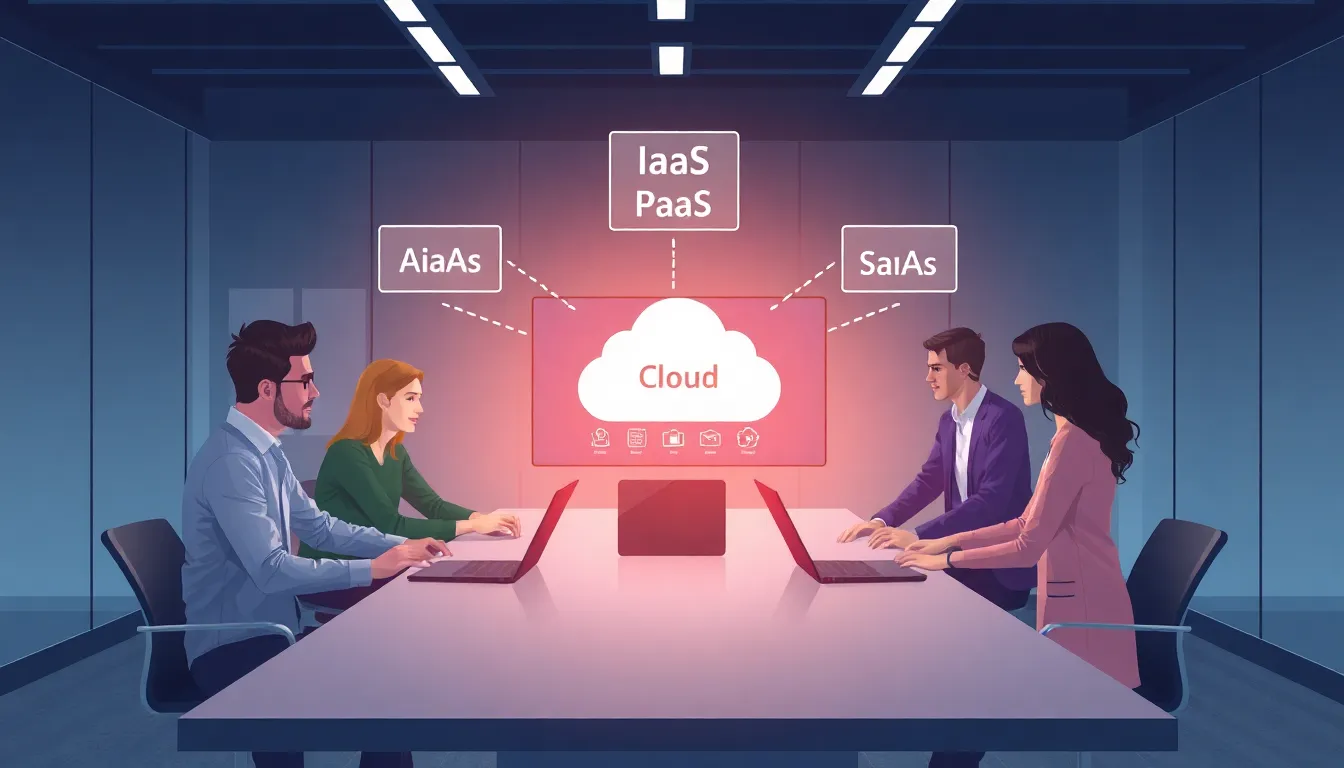In the ever-evolving world of cloud computing, understanding the differences between IaaS, PaaS, and SaaS can feel like trying to decipher a secret code. These three acronyms may sound like the latest tech lingo, but they hold the keys to unlocking efficient and scalable solutions for businesses of all sizes.
Imagine IaaS as your cloud-based toolbox, PaaS as the workshop where you create your masterpieces, and SaaS as the finished product ready for your customers. Each offers unique benefits and caters to different needs, so knowing which one to choose can save time, money, and a few gray hairs. Dive into this article to unravel the mysteries of IaaS, PaaS, and SaaS, and discover how they can transform your business operations with a sprinkle of humor and a dash of insight.
Table of Contents
ToggleOverview of Cloud Computing
Cloud computing provides scalable resources and services over the internet. Organizations access and utilize these resources without needing physical infrastructure. The flexibility of cloud computing enables companies to adapt quickly to changing needs.
Infrastructure as a Service (IaaS) offers fundamental computing resources like servers, storage, and networking. Businesses can manage their operating systems and applications while relying on a cloud provider for infrastructure management. An example of IaaS is Amazon Web Services (AWS) EC2, which allows users to run virtual machines.
Platform as a Service (PaaS) supplies a development and deployment environment. Developers can build, test, and deploy applications without managing underlying hardware. Google App Engine exemplifies PaaS, enabling developers to create scalable web applications easily.
Software as a Service (SaaS) delivers software applications through the internet. Users access these applications via web browsers, eliminating the need for local installation. Microsoft 365 stands as a leading SaaS solution, providing productivity tools to users anywhere.
Each cloud computing model has specific benefits tailored for various needs. IaaS emphasizes control and customization, PaaS focuses on application development efficiency, and SaaS eliminates software management hassles. Understanding these distinctions helps organizations select the most suitable model for their operations.
Cloud computing has transformed how businesses operate, providing resources on demand. Enhanced flexibility, cost savings, and streamlined processes characterize this model, making it an attractive option for modern enterprises.
Understanding IaaS, PaaS, and SaaS


The differences between IaaS, PaaS, and SaaS are essential for grasping cloud computing’s functionality. Each model serves specific purposes within an organization’s IT structure.
Definition of IaaS
IaaS, or Infrastructure as a Service, provides fundamental computing resources through the cloud. Users access virtual servers, storage, and networking on a pay-per-use basis. This model allows organizations to scale infrastructure without investing in physical hardware. Companies can quickly deploy and manage virtual machines, enhancing flexibility. An example is Amazon Web Services (AWS) EC2, which offers various computing solutions to meet demanding workloads. With IaaS, businesses retain control over their infrastructure while benefiting from cloud scalability.
Definition of PaaS
PaaS, or Platform as a Service, offers development tools and environments for creating applications. This model simplifies the development process by providing a platform for building, testing, and deploying software. Developers use PaaS to focus on writing code without worrying about underlying hardware or software layers. Google App Engine exemplifies a PaaS solution, providing a framework for developers to build applications while managing resources automatically. PaaS enhances collaboration among teams, streamlining the development lifecycle.
Definition of SaaS
SaaS, or Software as a Service, delivers software applications via the internet. Users access these applications on-demand, eliminating the need for installation or management. This model allows organizations to benefit from regular updates and maintenance without additional effort. Microsoft 365 serves as a leading SaaS offering, providing tools like Word and Excel in a cloud-based environment. By using SaaS, businesses can reduce IT overhead while ensuring employees have access to the latest software solutions effortlessly.
Key Differences Between IaaS, PaaS, and SaaS
IaaS, PaaS, and SaaS each serve distinct roles within cloud computing, offering various levels of control, functionality, and cost structures essential for businesses.
Control and Management
IaaS provides the highest level of control, allowing users to manage servers, storage, and networks. Organizations can customize their environments based on specific needs. PaaS offers moderate control focused on application development, with predefined frameworks and tools facilitating easier app deployment. While SaaS encompasses the least control, users benefit from fully managed applications, eliminating the need for infrastructure and platform management. This model is ideal for those who prefer convenience over customization.
Use Cases and Applications
IaaS is particularly suited for businesses needing scalability for variable workloads, such as data storage and processing. Companies running complex applications or legacy systems often find value in this model. PaaS attracts development teams looking to streamline app creation, such as companies building custom applications without managing underlying infrastructure. SaaS appeals to organizations wanting quick access to software solutions, like communication tools and productivity suites, exemplified by Microsoft 365. Each model accommodates specific requirements, driving varied use cases in cloud adoption.
Pricing Models
With IaaS, pricing generally follows a pay-as-you-go structure based on utilized resources, allowing flexibility for fluctuating demand. PaaS typically charges users based on the resources consumed during development and deployment, aligning costs with growth. SaaS often uses subscription-based pricing, offering predictable payments that include software updates and support. These models provide different financial strategies for organizations, enabling choices that fit their budget and operational needs.
Advantages and Disadvantages
Understanding the advantages and disadvantages of IaaS, PaaS, and SaaS helps organizations choose the right cloud computing model for their needs.
Benefits of IaaS
IaaS offers significant scalability, enabling businesses to adjust resources according to demand. Control over infrastructure allows for extensive customization, ensuring that organizations can optimize their setups. Cost savings manifest through a pay-as-you-go model, eliminating the need for expensive physical hardware investments. Additionally, rapid deployment of applications and services streamlines operations, enhancing business agility.
Benefits of PaaS
PaaS accelerates application development by providing pre-built tools and environments. Collaboration among development teams improves, as users can work simultaneously within the platform. Reduced complexity simplifies the development process, allowing teams to focus on coding rather than infrastructure management. The integration of multiple services enhances functionality, providing comprehensive solutions for developers. Flexibility remains a core attribute, adapting to various programming languages and frameworks.
Benefits of SaaS
SaaS delivers immediate access to software applications without installation requirements. Users benefit from automatic updates, ensuring they always use the latest features. This model reduces IT overhead significantly, as businesses do not manage underlying infrastructure. Subscription pricing offers predictable costs, enhancing budget management. Accessibility allows users to work from any device with internet access, promoting collaboration and efficiency.
Challenges of Each Model
IaaS demands technical expertise for effective management, which may pose a barrier for some organizations. Security concerns arise, as organizations must ensure that data is protected in the cloud environment. PaaS can lead to vendor lock-in, limiting flexibility and innovation due to reliance on specific platforms. SaaS solutions may not offer customization options, restricting users to predefined features. Businesses must also consider data privacy regulations when utilizing cloud services.










